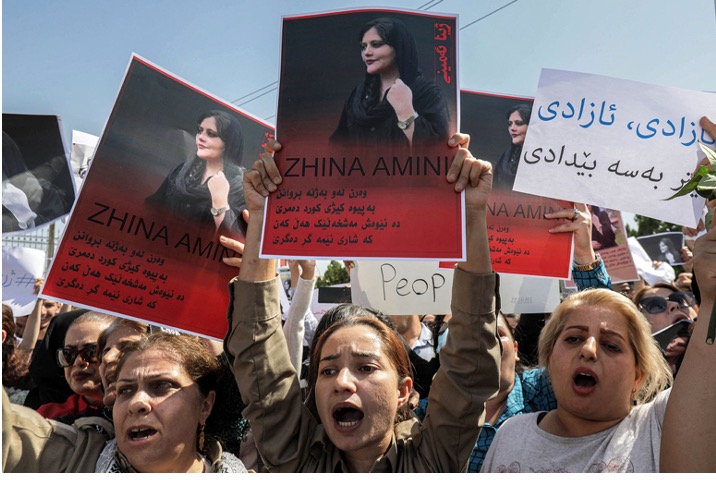CommentsWOMEN, LIFE, FREEDOM - Mahsa Amini, who was preparing to go to university with the goal of becoming a doctor, was taken into custody on Sept. 13 in Tehran by Iranian ‘morality police’. Her crime? Wearing a hijab they deemed “inappropriate.”
Her 17-year-old brother, Kiarash, who was with her visiting the capital from the north western state of Kurdistan, was there at the time of her arrest.
As the young woman’s father explained to a reporter soon after, “My son begged them not to take her, but he was beaten too, his clothes were ripped off.”
Some witnesses to what happened that day told Amini’s brother that they saw her being assaulted inside of the police van that took her away, a claim authorities have denied.
A short time after being arrested, Amini, a member of the country’s Kurdish minority, was in a coma and reportedly had a fractured skull. She was eventually brought to Kasra hospital, where she died on September 16th.
Authorities at first claimed that the 22-year-old, who also went by the Kurdish name Jina, had suffered a heart attack in custody, though she had no history of this kind of medical trouble and this didn’t take into account the clear signs of head trauma and bruising on her lower body. More recently, they have claimed that she died as a result of a brain tumor that had been removed when she was a child with no problems in the years after.
The idea seems to have been to convince people that it was a coincidence that she was in police custody when a pre-existing condition caused her death, but it was clear early on that large numbers of Iranians weren’t buying this explanation. On top of this, the unwillingness of authorities to take any kind of responsibility for the tragedy was only further stoking long held grievances, especially among Iran’s women and young people.
Amini’s death sparked protests that seem to have begun in Kurdish areas but soon spread to other parts of the country and are still ongoing. At least 41 people have died in the unrest according to the government’s most recent official figure, which is contested by Iran Human Rights, a Norway based organization that puts the number at 76 or more.
There is no accounting for injuries, but footage that circulated widely before authorities limited internet access showed police viciously attacking peaceful protesters with clubs, chemical irritants, rubber bullets and allegedly, live ammunition.
The chant, “women, life, freedom,” which was used originally by Kurds in Turkey and Syria who have made gender equality central to their struggles in both places, was soon translated into Farsi and become a rallying cry for the ongoing protests led in the main by women fed up with the rules imposed on them by a theocratic government for whom their rights and very well-being are an afterthought at best.
Early on there were images of women burning their hijabs and publicly cutting their own hair but, along with cutting Internet access to their people, Iranian authorities have also gone after independent journalists. As of October 10th, at least 40 reporters had been arrested since the protests began, so images and even basic reporting on the ground are almost always mediated by government censors.
Iran’s shameless gaslighting, including blaming foreign actors for the unrest have clearly not worked. It’s true that Western sanctions have bitten working people in Iran deeply, and are both cruel and ultimately counterproductive in that they have been used to rally Iranians under the Islamic Republic’s flag. In this case, the conduct of the Iranian regime is what enrages its own citizens.
A 25 year old Kurdish woman named Razhin put a finer point on the uprising, when she told the Guardian not long after Mahsa Amini’s death, “It is not an Iranian revolution, or even a Kurdish revolution. It is a women’s revolution.”
With the rights of half the world’s population at risk in so many places and completely unrecognized in others, it’s a revolution whose time has finally come.
Perhaps men everywhere should ask how they can be the best allies.
Perhaps hardline misogynist leaders everywhere need to worry.
(Derek Royden is a writer based in Montreal, Canada. This story was first published in CounterPunch.org.)
















